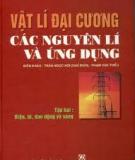Tài liệu Thư viện số
- Công nghệ thông tin (1283 )
- Toán học - Vật lý học (450 )
- Văn hóa - Giáo dục (420 )
- Điện - Điện tử - Viễn thông (482 )
- Tài chính - Kế toán (521 )
- Kinh tế - Quản lý (473 )
- Lý luận chính trị (454 )
- Ngoại Ngữ (250 )
- Nhà nước - Pháp luật (290 )
- Luận Văn - Đồ Án (397 )
- Giải Trí (191 )
- Y tế - Sức khỏe (400 )
- Tài liệu tham khảo khác (164 )
Danh mục TaiLieu.VN
- Mẫu Slide Powerpoint
- Luận Văn - Báo Cáo (344720)
- Kinh Doanh Marketing (65512)
- Kinh Tế - Quản Lý (48934)
- Tài Chính - Ngân Hàng (55898)
- Công Nghệ Thông Tin (142209)
- Tiếng Anh - Ngoại Ngữ (47066)
- Kỹ Thuật - Công Nghệ (134345)
- Khoa Học Tự Nhiên (107174)
- Khoa Học Xã Hội (82451)
- Văn Hoá - Nghệ Thuật (54408)
- Y Tế - Sức Khoẻ (173915)
- Nông - Lâm - Ngư (62504)
- Kỹ Năng Mềm (29016)
- Biểu Mẫu - Văn Bản (27610)
- Giải Trí - Thư Giãn (51994)
- Văn Bản Luật (198854)
- Tài Liệu Phổ Thông (402015)
- Trắc Nghiệm Online (213578)
- Trắc Nghiệm MBTI
- Trắc Nghiệm Holland
Tài liệu nổi bật
Kết quả 2773-2784 trong khoảng 5787
-
Lecture CCNA Security - Chapter 4: Implementing Firewall Technologies
Chapter 4 objectives: Describe numbered and named, standard and extended IP ACLs, configure IP ACLs with IOS CLI and CCP, describe TCP established ACL functionality, describe and configure reflexive ACLs, describe and configure dynamic ACLs,... Inviting you to refer.
132 p itc 23/04/2016 267 1
-
Lecture CCNA Security - Chapter 2: Securing Network Devices
Learning objectives of this chapter include: Secure the physical installation of and the administrative access to Cisco routers based on different network requirements using the CLI and CCP; configure administrative roles using privilege levels and role-based CLI; Implement the management and reporting features of syslog, SNMP, SSH, and NTP;...
175 p itc 23/04/2016 274 2
-
Lecture Routing Protocols and Concepts - Chapter 7: RIP version 2
In this chapter, you learned to: Encounter and describe the limitations of RIPv1’s limitations, apply the basic Routing Information Protocol Version 2 (RIPv2) configuration commands and evaluate RIPv2 classless routing updates, analyze router output to see RIPv2 support for VLSM and CIDR,...
27 p itc 23/04/2016 261 1
-
Lecture Routing Protocols and Concepts - Chapter 6: VLSM and CIDR
Chapter 6 introduce VLSM and CIDR. This chapter compare and contrast classful and classless IP addressing, review VLSM and explain the benefits of classless IP addressing, describe the role of the Classless Inter-Domain Routing (CIDR) standard in making efficient use of scarce IPv4 addresses.
22 p itc 23/04/2016 262 1
-
Lecture Routing Protocols and Concepts - Chapter 9: EIGRP
Chapter 9 describe the background and history of Enhanced Interior Gateway Routing Protocol (EIGRP), examine the basic EIGRP configuration commands and identify their purposes, calculate the composite metric used by EIGRP, describe the concepts and operation of DUAL, describe the uses of additional configuration commands in EIGRP.
65 p itc 23/04/2016 291 1
-
Lecture Routing Protocols and Concepts - Chapter 8: The Routing Table - A Closer Look
After studying this chapter you will be able to: Describe the various route types found in the routing table structure, describe the routing table lookup process, describe routing behavior in routed networks.
39 p itc 23/04/2016 270 1
-
Lecture Routing Protocols and Concepts - Chapter 11: OSPF
Chapter 11 introduce OSPF. This chapter describe the background and basic features of OSPF; identify and apply the basic OSPF configuration commands; describe, modify and calculate the metric used by OSPF; describe the Designated Router/Backup Designated Router (DR/BDR) election process in multiaccess networks; describe the uses of additional configuration commands in OSPF.
45 p itc 23/04/2016 225 1
-
Lecture Routing Protocols and Concepts - Chapter 10: Link-State Routing Protocols
After studying this chapter you will be able to: Describe the basic features & concepts of link-state routing protocols, list the benefits and requirements of link-state routing protocols.
27 p itc 23/04/2016 280 1
-
Lecture CCNA Security - Chapter 6: Securing the Local Area Network
The following will be discussed in this chapter: Describle endpoint security with IronPort; describle endpoint security with Network Admission Control; describle endpoint Security with Cisco Security Agent; describle MAC address spoofing attacks, STP manipulation attacks, MAC address overflow attacks, LAN storm attacks, and VLAN attacks;...
143 p itc 23/04/2016 311 2
-
Lecture CCNA Security - Chapter 5: Implementing Intrusion Prevention
This chapter describle the underlying IDS and IPS technology that is embedded in the Cisco host-and network-based IDS and IPS solutions, configure Cisco IOS IPS using CLI and CCP, verify Cisco Verify Cisco IOS using CLI and CCP. Inviting you to refer.
83 p itc 23/04/2016 297 2
-
Lecture CCNA Security - Chapter 8: Implementing Virtual Private Networks
Upon completion of this lesson, the successful participant will be able to: Describe the purpose and operation of VPNs, differentiate between the various types of VPNs; identify the Cisco VPN product line and the security features of these products; configure a site-to-site VPN GRE tunnel;... Inviting you to refer.
124 p itc 23/04/2016 268 1
-
Lecture Scaling Networks - Chapter 2: LAN Redundancy
In this chapter, you learned to: The issues with implementing a redundant network, IEEE 802.1D STP operation, the different spanning tree varieties, PVST+ operation in a switched LAN environment, configure PVST+ in a switched LAN environment,...and another content.
60 p itc 23/04/2016 285 1
Đăng nhập
Bộ sưu tập nổi bật























